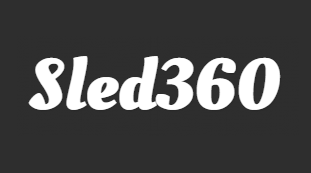- No products in the cart.
- August 13, 2017
- advanced riding, basic riding, intermediate riding
- by sled360
Here I will talk about the correct body and foot positioning to use when you’re out on your sled. These should provide you with increased control and improve your overall safety.
Body Positions – Hips and Shoulders
Most of the techniques I reference here will be from a standing position. In this position, it is very important to keep your hips and shoulders square with the direction you are going, at all times. Maintain an upright torso, and unless deliberate, keep your torso perpendicular to the slope of the terrain you are riding. If you allow your shoulders and torso to twist you will get behind your balance point. If you lean back you will get behind your balance point.
Foot Positions – Neutral Forward
This is the most common and universal foot position. Fold holds available for toes if needed or desired. The position weights the skis which provides better steer control downhill. This position is the base for neutral position turns. 
Foot Positions – Neutral Back
For this position, the feet are moved back on the running boards. The objective is to move weight off the skis and onto the track. It’s then easier to turn the sled into and in climbs. With the weight off the skis, turn the sled as though you are standing on a balance board. 
Foot Positions – Off Camber
This foot position is how you would have two feet on a Water-ski. This is used to weight the uphill side of the sled to cross the fall line or natural tendency of the slope. If turning uphill, weight the back of the sled. If turning downhill, get your weight as far forward as you can– even crouch to get your weight over the spindle, but keep your hips and shoulders square 
Foot Positions – Opposite Foot Forward
This foot position, while more advanced, is very important and useful as your skills develop. It’s used to pull the sled “On Edge”, to take weight of the sled (pedaling), to push the sled away from the slope and for downhill tracking. The right foot will be forward on the running board for descents but back on the running board for climbing, or turning into a climb. 
Eye Position
Your hips and shoulders should be square with where you are going – this is your riding present. Your eyes should be looking where you are wanting to go – this is your riding future. If you fixate on objects that you don’t want to hit – they WILL be in your riding future. The further forward you are looking, the more opportunity you will have to maintain directional control. 

